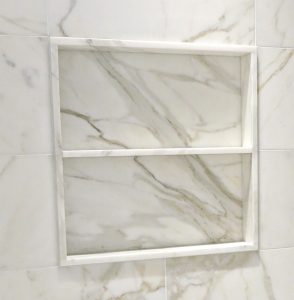Insider Secrets to avoiding change orders
Change Orders can derail your project budget or your schedule. This can cause a lot of tension between a homeowner and a contractor.
And even if you’ve planned for cost overruns, everyone wants to avoid change orders.

What Are Construction Change Orders?
Before you sign a contract, make sure you understand where change orders might come from.
In a nutshell, a construction change order happens when there is a change to the amount of work that a contractor is asked to perform. There are several standard forms for Change Orders. You should become familiar with the language any change order should include.
Those changes come from two main sources
- Existing Conditions and
- Owner Requests
Existing Conditions Change Orders
The first reason is when unexpected existing conditions crop up that require additional work.
Existing conditions change orders can become complicated and very contentious. Here are a few simple examples of how this type of change order happens.
Let’s say a homeowner is having a roof replaced. The roofing company tears off the shingles and finds that some of the plywood sheathings is damaged and needs to be replaced. If there was no way for the roofing company to find this condition beforehand, it could be a legitimate change order.
Another common example is when workers find that some existing work has to be replaced because it was done improperly.
A contractor might know that the work is not code-compliant. He knows this is something he is obligated to correct.
This could be a legitimate change order because of additional work not included in the original contract.
How To Avoid Existing Conditions Change Orders
Everyone benefits when the contractor is given the chance to make probes before construction begins or even before entering into a contract.
Examples when you need to make special arrangements
- A roofer wants to get into the attic or climb up on your roof.
- An excavation contractor wants to probe the soil.
- A contractor wants to cut holes in sheetrock.
You may have to increase your budget if a contractor discovers something unexpected. But there are advantages when you know in advance about an unexpected cost item.
Before construction begins, you still have an opportunity to control the fallout from the unexpected. You might choose to eliminate some other work to stay within your budget. You can negotiate with the contractor at a time when you still have the leverage.
Related Post: Save Money By Comparing Bids The Right Way
How To Avoid Design Changes
Another cause of change orders is when there is a design change. If the homeowner makes a change that increases the contractor’s scope of work, there may be a change order.
These change orders become especially contentious when the homeowner is asking for something he/she thought was already included. It’s one thing to ask the contractor to paint the kitchen when you expected to do that work yourself. But if you took it for granted that painting was included and it’s not, you will have a nasty surprise.
The first lesson here is to go through the contract documents three times.
The first time should be with the contractor. Have the contractor explain the scope of the work. Ask what is not included.
The second time should be by yourself. Take your time. Make notes about any questions you have. Send a list of those questions and get a revised proposal if necessary.
The third scope review should be with the contractor again to review and confirm the scope.
Only go ahead when you have confidence that everything you want is included in writing. Ask the contractor if he’s aware of anything that’s not included.
Many times a contractor will include a list of items that are not included. Sometimes this will be noted as “N.I.C” which stands for “Not in contract”.
How To Manage Change Order Costs
One of the best ways to manage change order costs is to have a set of unit prices included in your contract.
To return to an original example, the roofer can give you a price per square foot or per sheet for each piece of roof sheathing that needs to be replaced. The electrician can provide a unit price for each type of switch and outlet. Have the general contractor Include a fixed percentage mark-up on change orders.
This will help everyone to know what a potential change order will cost.
But, the most important step is to make sure that the scope of work is clearly spelled out before any workers are at your home. Writing out or drawing that scope is hard work. It takes time, energy and effort by the homeowner, the contractor subcontractors, and suppliers.
Also, make sure that the contract has a clearly spelled out change order process. One of the most important of these is that the contractor is not to perform any change order work without your written authorization.
Any work that you put into the change order process before work begins will pay dividends during construction. You will often find that the contractor is a willing helper in this process. Despite everything you might have heard, contractors don’t generally like change orders!
Related Posts:







Thanks so much for this Info, We currently do alot of bathroom remodels and the change orders are killing my teams time. This will help.Alot
I know, I know. A $500 change order can so easily cost a couple of days you’ll never get back. Clients always believe contractors make so much on change orders. How happy would you be to sign a contract with a client who’s willing to guarantee no change orders?!